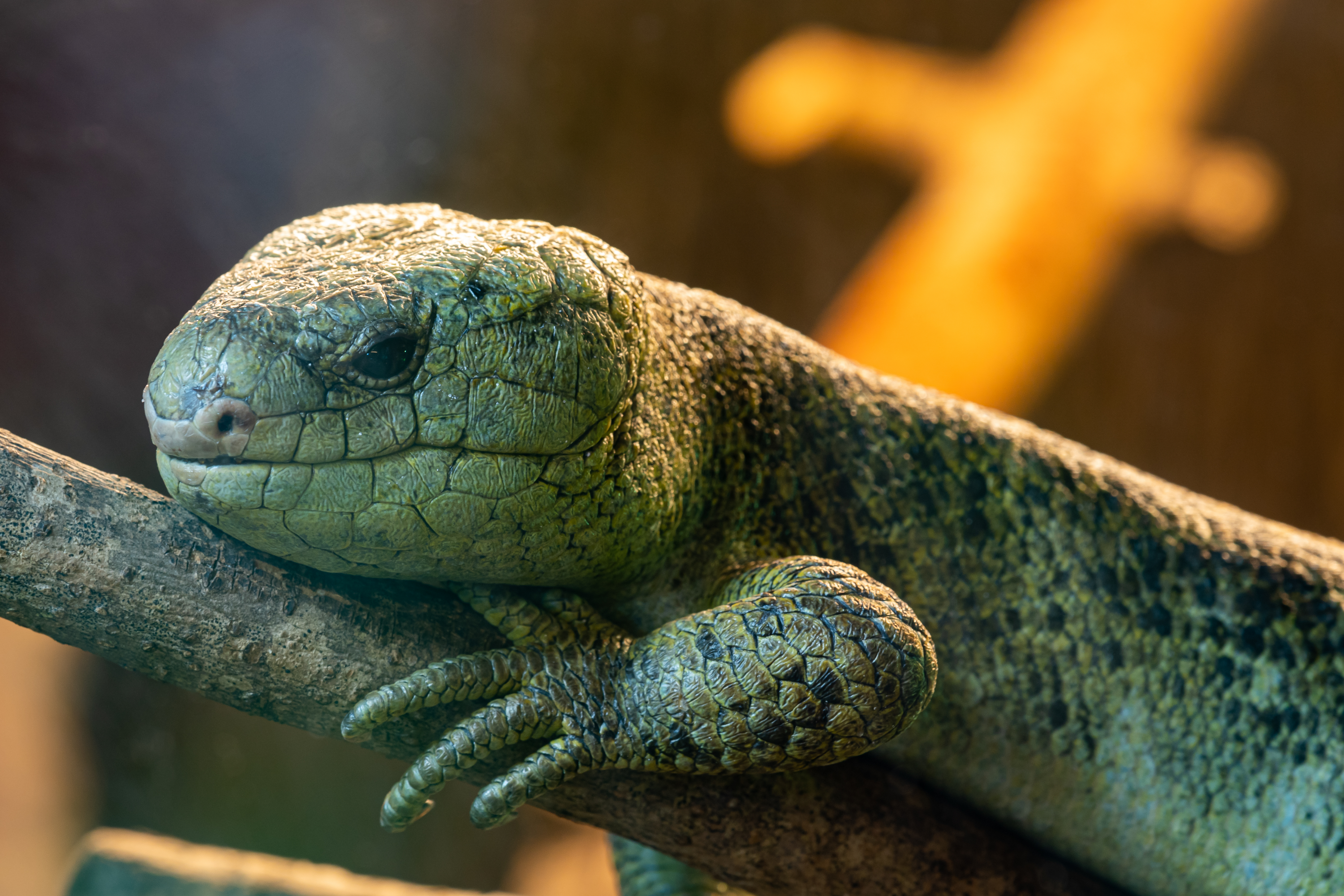Prehensile-tailed skink
(Corucia zebrata)

Description
The Solomon Islands skink (Corucia zebrata), also known as prehensile-tailed skink, monkey-tailed skink, giant skink, zebra skink, and monkey skink, is an arboreal species of skink endemic to the Solomon Islands archipelago. It is the largest known extant species of skink. The Solomon Islands skink is completely herbivorous, eating many different fruits and vegetables including the pothos plant. It is one of the few species of reptile known to function within a social group or circulus. Both male and female specimens are known to be territorial and often hostile towards members not a part of their family group. Corucia is a monotypic genus, containing a single species. However, in 1997 it was determined that there are two subspecies of the Solomon Islands skink: the common monkey-tailed skink (Corucia zebrata zebrata) and the northern monkey-tailed skink (Corucia zebrata alfredschmidti). Among other variances, the northern skink is smaller and has darker eyes with a black sclera. Extensive logging is a serious threat to the survival of this species. Consumption for food by indigenous Solomon Islanders and excessive pet trade exports have affected wild populations. Export of this species from the Solomon Islands is now restricted and the animal is protected under CITES appendix II. The Solomon Islands skink is native to Papua New Guinea, and the Solomon Islands archipelago, a group of islands in the south-west Pacific Ocean. The common subspecies (C. z. zebrata) is found on the islands of Choiseul Island, New Georgia, Isabel, Guadalcanal, Ngela, Malaita, Makira (Solomon Islands), Ugi and Santa Ana. The northern subspecies (C. z. alfredschmidti) is known from the islands of Bougainville and Buka and the Shortland Island Group. Bougainville and Buka are geographically part of the Solomons Archipelago, though politically part of Papua New Guinea. Both subspecies of the Solomon Islands skink are strictly arboreal, usually inhabiting the upper canopy of forested areas throughout its range. It commonly occurs in the strangler fig tree (Ficus sp.), provided the epiphytic growth of its several food plants are present. It occurs in trees in semi-cleared areas and cultivated food gardens, again provided its food plants occur there.
Taxonomic tree:







